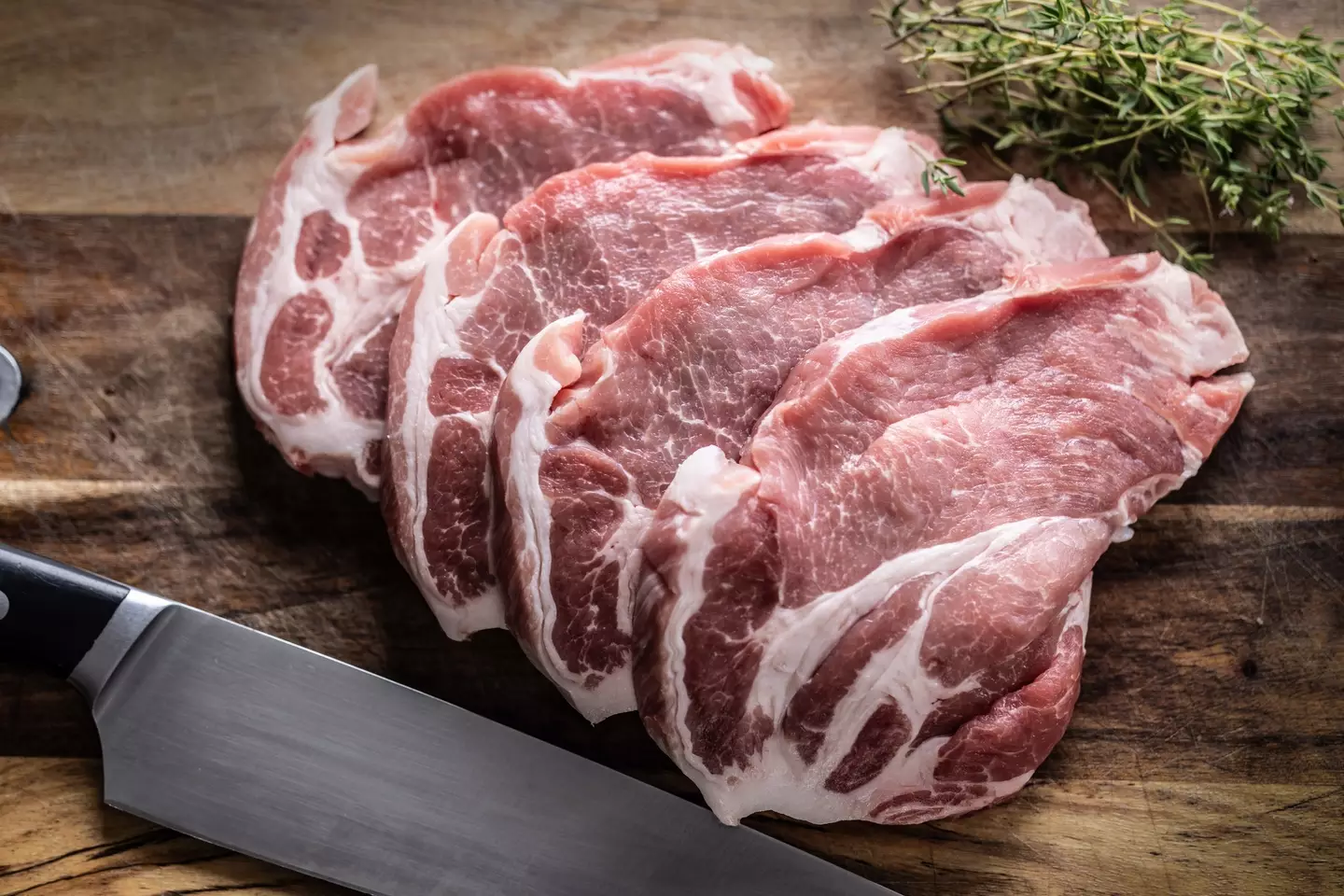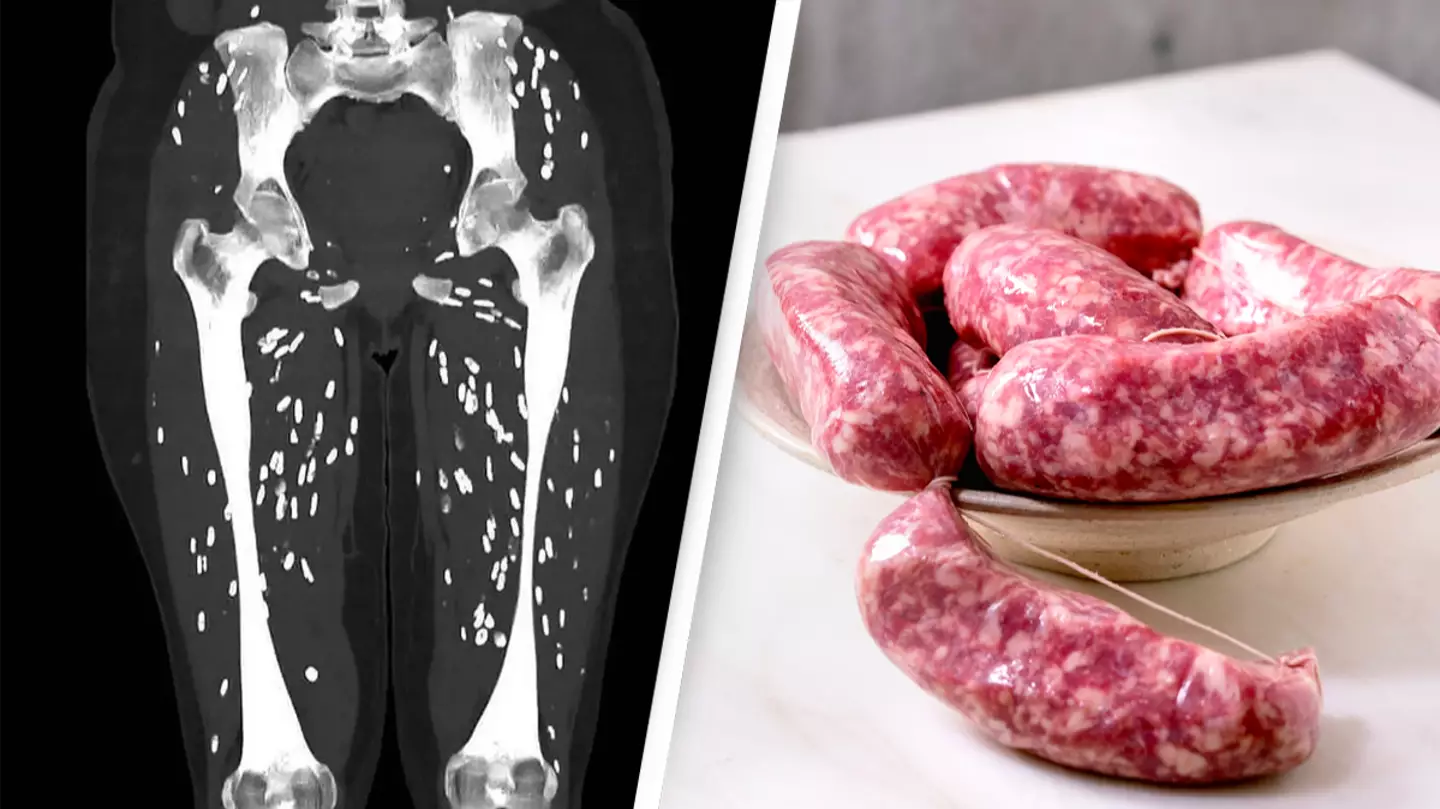If you’re currently enjoying a sausage, you may want to stop and reconsider after learning what can happen to your body if it’s undercooked.
Since I had to discover how unpleasant this can be, it’s only fair that you do too. Let’s face this together.
This revelation may not only make you rethink your meat choices but might also encourage you to cook everything thoroughly rather than risk undercooking it in the future.
So where does this journey begin? As expected, on social media – the home of all alarming health horror stories.

ER doctor Sam Ghali shared an image of a CT scan with his Twitter followers, but it wasn’t any ordinary scan.
As the doctor put it, it was ‘one of the craziest CT scans he’d ever seen’.
The scan depicted a person’s pelvis and upper legs, with unusual white splotches scattered throughout.
Unfortunately, this wasn’t a simple error; the individual in the scan was suffering from a parasitic infection.
Dr. Ghali detailed the condition, known as cysticercosis: “Cysticercosis is an infamous parasitic infection caused by ingestion of larval cysts of Taenia Solium, also known as: Pork Tapeworm.”
The situation only worsens from here.
“Humans become infected with T. Solium by ingesting cysts found in undercooked pork. Within several weeks (usually around 5-12), these cysts develop in the gastrointestinal tract into mature adult tapeworms. This condition is known as Intestinal Taeniasis,” he explained.
“These adult tapeworms then shed eggs, which are excreted in human feces.
“It’s crucial to note that it’s only when these eggs are ingested via fecal-oral transmission that one can develop the condition known as Cysticercosis.”

“Once ingested (by humans or pigs), the eggs release larvae, which penetrate the intestinal wall, invade the bloodstream (via mesenteric venules), and can spread anywhere in the body,” he added.
According to Dr. Ghali, these parasites commonly target the ‘brain, eyes, subcutaneous tissues, and skeletal muscles,’ where they lodge and form cysts known as cysticerci.
Fortunately, an individual’s inflammatory response usually kills the cysts, leading to calcification, which is visible on CT scans as ‘rice grain calcifications,’ according to Dr. Ghali.
However, if the larvae spread to the brain and form cysts in the tissue, there’s a risk of developing neurocysticercosis.
The World Health Organization (WHO) states that symptoms of this condition can include ‘severe headaches, blindness, convulsions, and epileptic seizures’ and can even be fatal.
To avoid such a scenario, Dr. Ghali advises: ‘Do your best to keep clean, always wash your hands, and never, ever eat raw or undercooked pork.’
Sound advice from the doctor, indeed.

